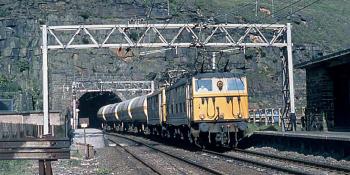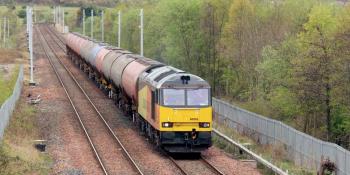Infrastructure News
NETWORK RAIL is hoping to award a contract to a Train Control Partner (TCP) to implement European Train Control System (ETCS) on the East Coast main line ‘very soon’.
Toufic Machnouk, NR’s Programme Director, told a meeting of the All Party Parliamentary Rail Group on 29 October that the contract had been through the legal process, saying ‘we want it yesterday’. The TCP will be responsible for installation of ETCS on the southern end of the ECML for around the first 100 miles out of King’s Cross.
Mr Machnouk said a contract for Traffic Management would be awarded early in the New Year. He explained this is a slightly different arrangement as is it not exclusive to the ECML, instead involving the setting up of Regional Route Partnerships in Rail Operating Centres. The procurement in multiple lots is to cover the York and Manchester ROCs and incorporate the Trans-Pennine route linking them.
Mr Machnouk said the ECML had been chosen because the ‘stars aligned’ around track and train, with a large proportion of trains on the route ETCS-ready and signalling renewals due. NR was reaching the final stages of completing an outline business case for the programme, and the next phase would involve starting train fitment and infrastructure implementation.
Infrastructure fitment would initially be as an overlay, Mr Machnouk explained, with renewals based on asset need. The aspirational plan is to have fitment complete by the end of the current Control Period in 2024, at which point NR hopes to be ready to declare the line an ETCS railway.
DIFFERENT TUNES
Paul Boyle, Head of ERTMS for operator LNER, said the system would provide day-to-day benefits, reducing the impact of everyday events. He noted journey times on the East Coast have gone backwards over the last 40 years due to the capacity and limitations of current signalling and train protection systems, something which digital signalling could help address. He also suggested the concept of fixed up and down lines could be done away with, with the possibility of a four-track railway including three lines in one direction and one in the other depending on peak flows, enabling operators to ‘play different tunes’. While the initial focus is on the southern end of the route, Mr Boyle said signalling in Edinburgh is due for renewal in the mid-2020s, presenting an opportunity if train fitment in Scotland can also be aligned.
Mr Machnouk said the legacy of the East Coast programme could subsequently be transferred to other routes, with renewals on the Midland main line due in Control Period 7 (2024-29) and a possible application in Anglia as well. He pointed to Network Rail’s Long Term Deployment Plan for digital signalling, published earlier in the year, which sought to balance the need for renewals with train fitment and market capabilities.




